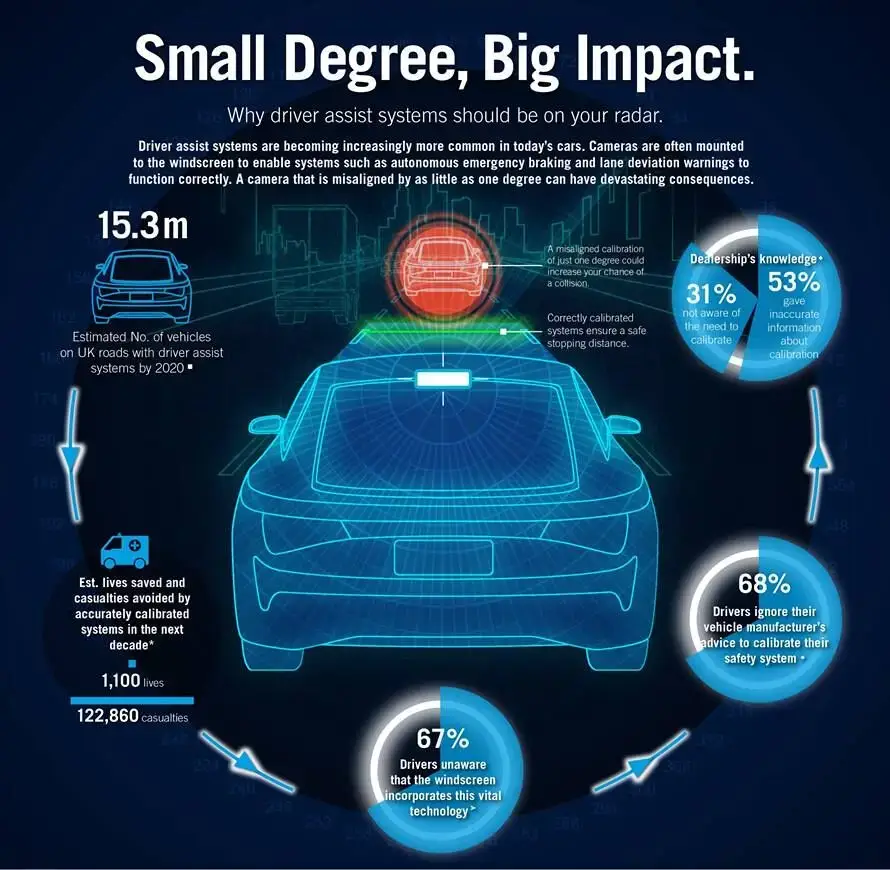Frequently Asked Questions
Indianapolis | Carmel | Westfield | Zionsville | Noblesville | Fishers | Surrounding CitiesAt ADAS Calibration Services, LLC, we understand the importance of accurate ADAS calibration and vehicle safety. Our FAQ page provides clear answers to common questions about our services, the calibration process, pricing, and more. Explore our FAQs to learn how we ensure precision and reliability for your vehicle’s safety systems.

What is ADAS auto calibration?
ADAS (Advanced Driver Assistance Systems) auto calibration is the process of aligning and calibrating the cameras, sensors, and radar used in the vehicle’s safety features. These features include adaptive cruise control, lane departure warning, automatic emergency braking, and more. Proper calibration ensures these systems work accurately to enhance vehicle safety.
Why is ADAS calibration important?
Proper calibration of ADAS components is crucial for ensuring that the vehicle’s safety features function correctly. Incorrect calibration can result in malfunctioning or inaccurate sensor readings, leading to potential safety risks, such as incorrect lane keeping assistance or improper collision detection.
How often should ADAS calibration be performed?
ADAS calibration should be performed in the following situations:
- After a collision or accident.
- When replacing or repairing ADAS sensors or cameras.
- After windshield replacement (particularly when the windshield houses the forward-facing camera).
- After suspension or wheel alignment work.
- Whenever the vehicle’s alignment is adjusted.
- If there is a malfunction or warning related to the ADAS system.
What are the types of ADAS calibration?
Static Calibration: Involves setting up the vehicle in a controlled environment with specific calibration targets positioned at predetermined distances and angles.
Dynamic Calibration: Requires driving the vehicle under certain conditions (e.g., specific speeds, road types) to allow the system to self-calibrate while on the road.
How long does ADAS calibration take?
Static Calibration: Typically takes between 30 minutes to 1 hour, depending on the vehicle make and model.
Dynamic Calibration: This may take between 30 minutes to 1 hour, depending on the manufacturer’s specifications and driving conditions.
Can I drive my car after calibration?
After dynamic calibration, you can drive your vehicle as usual.
What tools are used for ADAS calibration?
ADAS calibration requires specialized tools such as:
- Calibration Targets: Precise markers used in static calibration.
- Scan Tools/Diagnostic Equipment: These tools communicate with the vehicle’s ADAS sensors to monitor and adjust their settings during calibration.
- ADAS Calibration Kits: Kits that help set up the vehicle’s sensors and ensure alignment with manufacturer specifications.
How do I know if my vehicle needs ADAS calibration?
You may need ADAS calibration if:
- The vehicle’s sensors or cameras have been damaged.
- There are warning lights on the dashboard indicating a malfunction in safety systems.
- After repairs or part replacements involving sensors or cameras.
- The vehicle’s alignment has been altered or adjusted.
- Safety features such as lane departure or automatic braking are malfunctioning.
Is ADAS calibration covered under warranty or Insurance?
Many vehicle warranties or insurance policies may cover ADAS calibration if it’s necessary due to a manufacturer defect, accident, or covered repair. However, calibration due to wear-and-tear or after-market modifications may not be covered. Always check your warranty terms and speak to your insurer or service provider for clarity.
What happens if ADAS calibration is not performed correctly?
Incorrect calibration can lead to malfunctioning ADAS systems, resulting in improper activation of features like lane-keeping, collision avoidance, or adaptive cruise control. This could pose a safety risk to the driver and passengers, as well as other road users.
How much does ADAS calibration cost?
The cost of ADAS calibration can vary based on:
Type of Calibration: Static calibrations tend to be more expensive than dynamic ones due to the equipment required.
Vehicle Make and Model: Calibration costs may vary depending on the complexity of the ADAS system in your vehicle.
Will ADAS calibration affect my vehicle’s performance?
Proper calibration of ADAS sensors does not affect your vehicle’s general performance. It ensures that your safety features function correctly, but the process will not impact engine, transmission, or handling performance.
What should I do if my ADAS system is still malfunctioning after calibration?
If your ADAS system is still malfunctioning after calibration, it may indicate an underlying issue with the sensors, cameras, or associated components. In such cases, it is advised to return to the service provider for further diagnostics or repairs.
Can a windshield replacement affect ADAS calibration?
Yes, many vehicles have ADAS cameras and sensors mounted on the windshield. If you replace the windshield, the system may require recalibration to ensure proper alignment of the camera and sensors.
Does ADAS calibration require a test drive?
A test drive may be necessary for dynamic calibration, where the vehicle’s systems recalibrate during road use. Static calibration, however, does not typically require driving.

